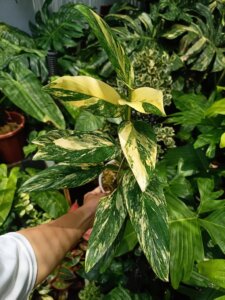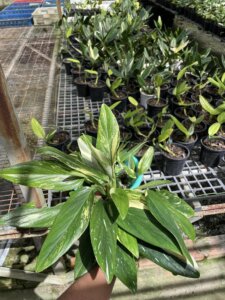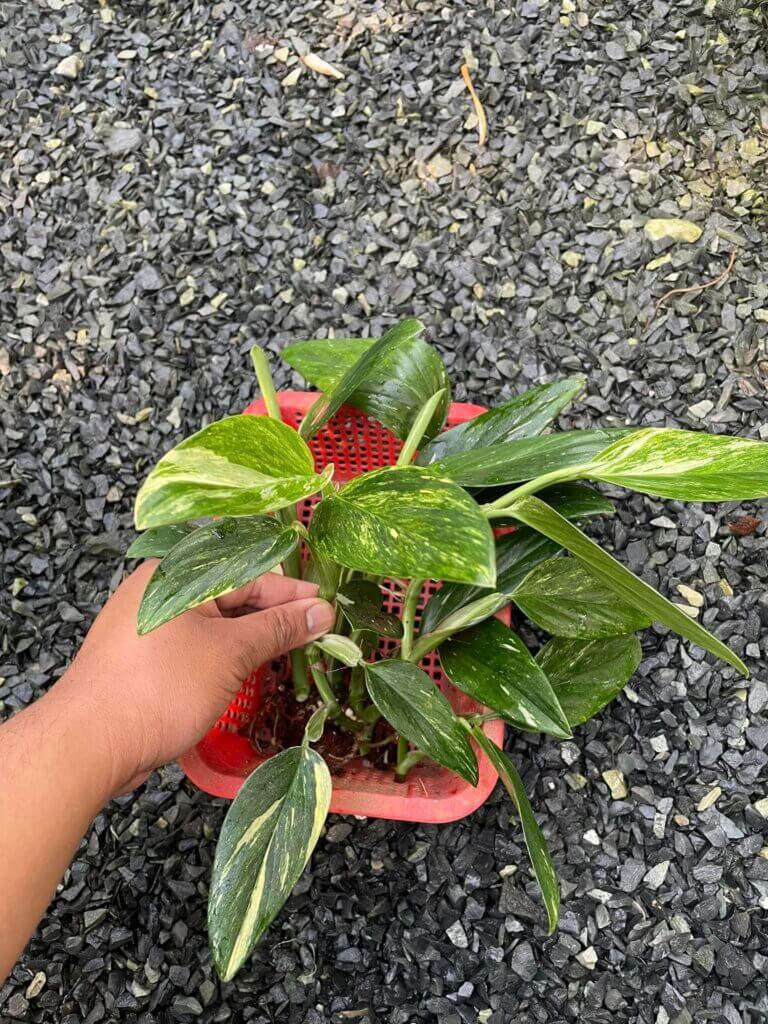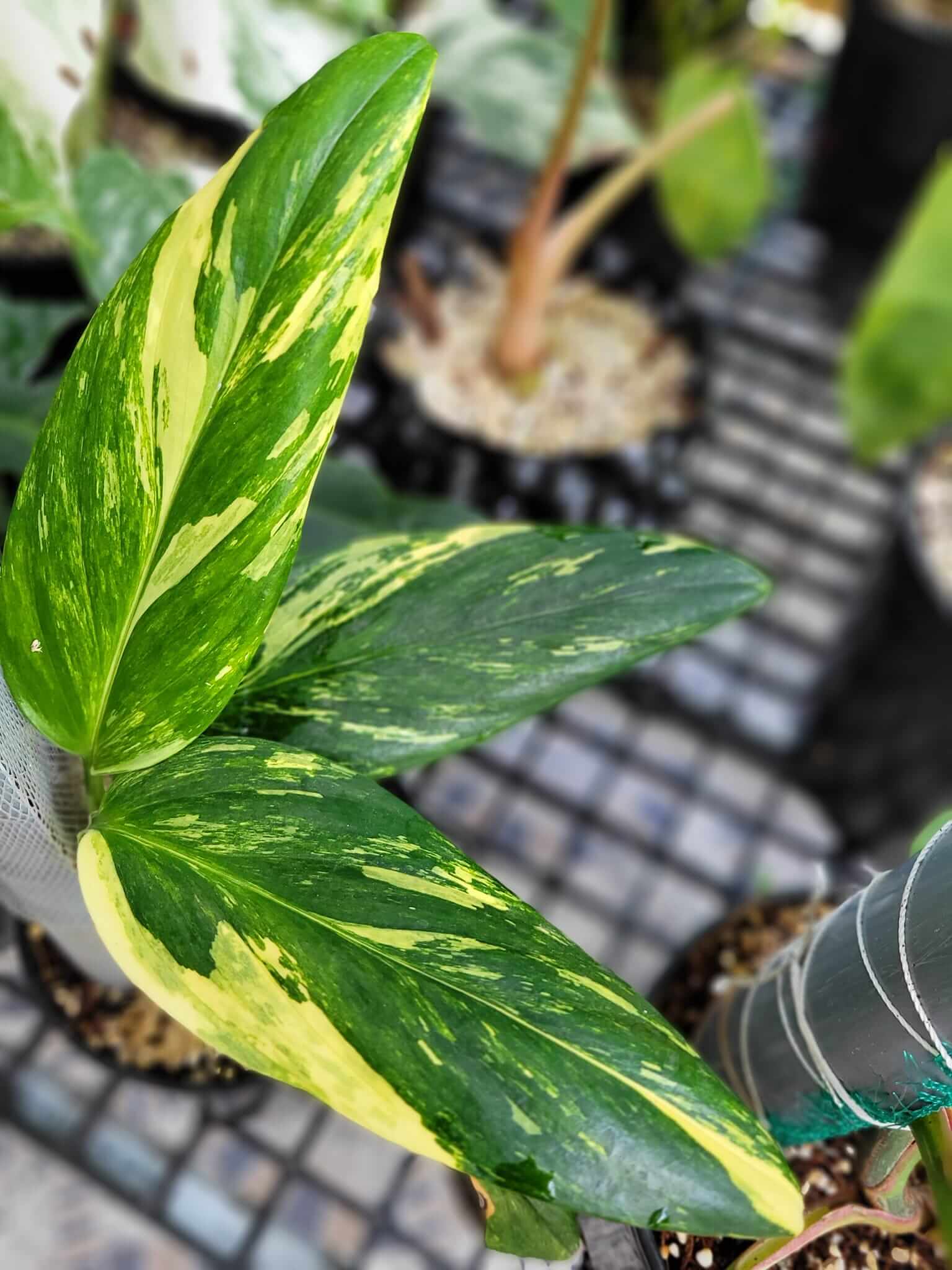Basic Information
This is a comprehensive guide on growing and caring for the Monstera Standleyana, also known as the Philodendron Cobra. This is a beautiful tropical houseplant with unique variegated leaves. It originates from Central America and requires specific conditions to thrive.



Light
Monstera Standleyana, a type of plant, thrives best in bright, indirect sunlight. Direct sunlight can cause the leaves to scorch, while insufficient light can weaken the plant. It is recommended to provide at least 6 hours of indirect sunlight daily. If east or west-facing windows are not available, artificial grow lights can be an effective alternative.
Tip: Place the Monstera Standleyana Albo in a well-lit window with a sheer curtain to filter and diffuse direct light.
Water
To keep your plant healthy, water it when the top layer of soil becomes dry, or the moisture meter reads 3-4. If you have an indoor plant, water it every 7-10 days, depending on the temperature. Water your plant once a week and less often during the growing season in winter. Overwatering your plant can cause root rot, while underwatering can cause leaves to wilt and turn yellow. Always use room temperature water and ensure the soil is evenly moist but not soaking wet.
Soil
Monstera Standleyana to grow healthily, it is essential to plant it in a potting mix that is light and airy, allowing for good drainage while also retaining moisture. It is recommended to use a soil mix that includes peat moss, perlite, and vermiculite, as this provides essential nutrients and proper aeration. It is crucial to maintain the right level of moisture and avoid waterlogging to ensure the well-being of your plant. The soil pH should be slightly acidic to neutral for optimal growth, ranging from 5.5 to 7.0.
Temperature
The ideal temperature range for plant growth is between 65°F to 85°F (18°C to 29°C). Consistent temperature is crucial to maintain the plant’s health and growth. To avoid leaf damage and stunted growth, extreme temperatures should be avoided.
Humidity
To ensure optimal growth of Standleyana plants, it is important to maintain high humidity levels ranging from 60% to 80%. If the humidity levels drop below 50%, the plants may exhibit signs of stress. You can use a humidifier or a tray with pebbles and water to maintain high humidity levels, but be careful not to let the water come into contact with the roots. Also, misting the leaves can help keep them healthy, but do not over-soak them or cause hard water deposits.
Fertilizer
To ensure your plants grow healthily, it is recommended that you fertilize them every two weeks during the growing season. During winter, reduce the frequency of fertilization to once a month. It is best to use a balanced 10-10-10 fertilizer for your plants. Additionally, you can use a balanced organic houseplant fertilizer but make sure to dilute it to half strength to avoid overfeeding. Always fertilize your plant after watering it well to prevent burning delicate roots.
Growth Rate
The Monstera Standleyana plant can grow up to 20 feet in ideal conditions. However, indoor plants usually grow to a height of 2-5 feet. The leaves of this plant can reach up to 6-9 inches in length and 5 inches in width.
Pet Safety
It is toxic to cats, dogs, and other pets, causing irritation and swelling if ingested.
Grow in Semi-Hydro
- Monsteras, known for their robust growth and iconic split leaves, flourish in semi-hydroponics systems like LECA/Pon, thanks to their adaptive root systems and love for moisture.
- Transitioning Monstera to semi-hydroponics is effective with a Nutrient Stagnant Wicking (NSW) setup, ensuring a stable and efficient growth environment.
- In LECA/Pon, Monstera roots quickly adjust, overcoming any initial challenges with root adaptation in the NSW system.
- A nutrient mix with a concentration of about 800-1000ppm is ideal for fertilizing Monsteras in semi-hydro setups.
- Monsteras are adaptable to various temperature and humidity conditions, making them suitable for growth in diverse indoor environments.
- Ongoing care includes regular monitoring of the water level in the reservoir and periodic flushing of the system to promote healthy and continuous growth.
Tips
- Check for common pests like spider mites and mealybugs, and treat them promptly.
- Overwatering and high humidity can lead to fungal diseases. Maintain proper watering and ventilation.
- Wear gloves when handling to avoid skin irritation from the sap.
- Repot every two to three years in a well-draining soil mix.
Growing Monstera Obliqua is not for the faint of heart. It demands attention, specific care, and a lot of patience. But for those willing to provide its needs, it’s a rewarding and stunning addition to any houseplant collection. Remember, each plant has its personality; part of the fun is learning and adapting to its unique requirements.
Happy planting! 🌱


